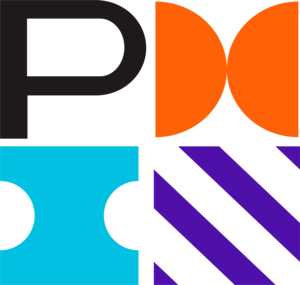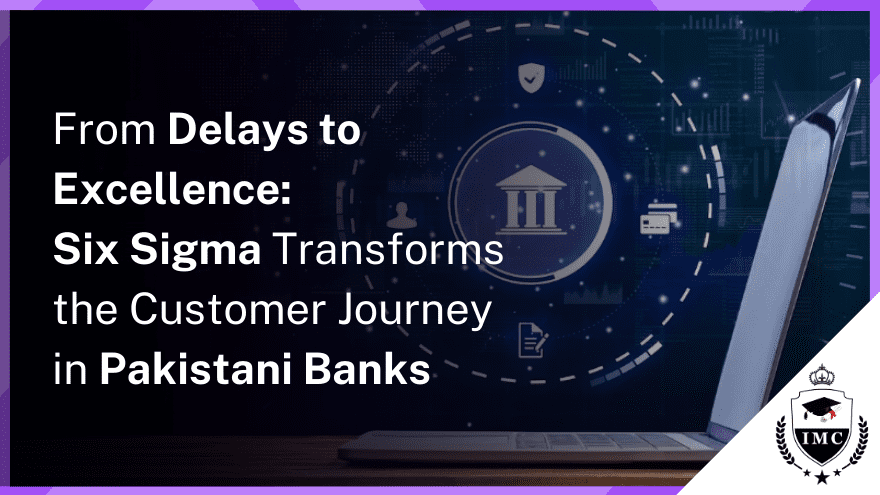Delivering an exceptional customer experience is more critical than ever for banks and financial services firms in Pakistan. With rising consumer expectations and fierce competition, focusing on quality improvements provides a competitive edge. Six Sigma – with its data-driven approach – offers immense potential for enhancing customer satisfaction.
Six Sigma is a methodology for maximizing quality by identifying and eliminating sources of errors and variability in processes. With deep roots in manufacturing, Six Sigma is now extensively used in the service sector, including banking and financial services. Leading international banks have reported billions in savings and higher customer loyalty through Six Sigma initiatives.
In this article, we will explore how banks and financial firms in Pakistan can leverage Six Sigma to improve the end-to-end customer journey and position themselves as customer-centric organizations.
Why Six Sigma for Banks and Financial Services in Pakistan?
The Pakistani banking sector faces unique challenges that Six Sigma can effectively address:
Increased competition: With new fintech players and digital adoption on the rise, traditional banks need to innovate and improve service quality to stay ahead.
Operational inefficiencies: Manual processes, siloed departments, and long turnaround times can lead to customer frustration and dissatisfaction.
Data overload: Utilizing unstructured data effectively to personalize customer experiences remains a hurdle for many institutions.
Regulatory compliance: Navigating complex regulations while ensuring transparency and security can be cumbersome.
By implementing Six Sigma, Pakistani banks and financial services can reap numerous benefits:
Reduced errors and defects: Streamlined processes lead to fewer manual interventions, minimizing errors and enhancing accuracy in transactions and documentation.
Improved efficiency and productivity: Identifying and eliminating bottlenecks optimizes workflows, leading to faster loan approvals, quicker account opening, and reduced waiting times.
Enhanced customer satisfaction: A focus on process improvement translates to shorter turnaround times, personalized interactions, and increased responsiveness to customer inquiries.
Data-driven decision making: Six Sigma's statistical approach empowers banks to analyze customer data effectively, personalize offerings, and anticipate their needs proactively.
Reduced costs: Improved efficiency and minimized errors lead to cost savings in staffing, resources, and rework efforts.
Real-World Examples:
Habib Bank Limited (HBL):
Implemented Six Sigma to reduce loan processing time by 30% and loan rejection rates by 15%, significantly improving customer satisfaction.
National Bank of Pakistan (NBP):
Utilized Six Sigma to streamline account opening processes, reducing turnaround time by 50% and increasing customer satisfaction.
Meezan Bank:
Implemented Six Sigma to enhance operational efficiency, leading to a 20% reduction in processing time for customer queries and complaints.
IMC Institute: Your Partner in Six Sigma Excellence
IMC Institute, a leading provider of Six Sigma training and certification in the UAE, is committed to empowering Pakistani banks and financial institutions to achieve customer-centric excellence. We offer a comprehensive range of Six Sigma programs designed for various roles within your organization:
- Six Sigma Yellow Belt Certification: Build foundational knowledge of Six Sigma concepts and tools.
-
Six Sigma Green Belt Certification: Lead small-scale improvement projects within your department.
- Six Sigma Black Belt Certification: Drive large-scale transformation across your organization.
Through tailored training, expert guidance, and industry-specific insights, we help you implement Six Sigma effectively, paving the way for a positive impact on your bottom line and, most importantly, your customer experience.
Streamlining Customer Onboarding
The first touchpoint for customers is the account opening process. However lengthy application forms, document requirements, verification procedures and complex onboarding processes lead to delays and frustration.
By mapping the onboarding journey, Six Sigma helps identify non-value steps that can be eliminated. Introducing online or mobile applications with pre-filled customer data further simplifies the process. Automating verifications and approvals accelerates decision making.
With faster and hassle-free onboarding achieved through process improvements, new customers get a positive first impression.
Optimizing Branch Operations
For routine transactions, branch visits are still common. Queuing delays, inadequate facilities and poor service quality remains problematic. Six Sigma analyzes pain points branch operations.
Statistical demand forecasting models scheduling to match staffing to customer volumes, reducing wait times. Layout redesign based on customer journey mapping optimizes the branch flow. Standardized service protocols and training boosts employee productivity.
As branch processes are refined using data-driven techniques, customers benefit through quicker fulfillment and higher satisfaction during visits.
Improving Contact Center and Digital Experiences
Contact centers and digital channels are vital for convenient self-service. However, long call waiting times, scripted service with no personalization, poorly designed mobile apps, and other issues create dissatisfaction.
Six Sigma gathers customer feedback and satisfaction scores across these touchpoints. Text and speech analytics identify common complaints and their root causes. Process improvements are then targeted to pain points - for example - reducing average handling time for calls through agent training and better knowledge systems. By aligning contact center and digital capabilities to actual customer needs, banks can deliver seamless omnichannel experiences.
Driving Innovations in Products and Services
Understanding customer requirements is also key for new product development. Focus group research and customer journey analysis provides insights that can spark innovative product features and enhancements.
Using Quality Function Deployment, customer desires can be translated into technical requirements for developers. Rapid prototyping and simulations help test concepts with user feedback. This ensures higher adoption and satisfaction when launched. With innovations driven by customer centricity, banks can continuously expand their offerings while exceeding expectations.
Building a Customer-Focused Culture
Ultimately, Six Sigma’s benefits hinge on cultural change and employee engagement across the organization. Training staff in process excellence and customer empathy is essential. Incentives and metrics must also encourage customer-focused behaviors. With leadership commitment to continuous improvement, banks can instill customer-centric values across teams. The result is consistently positive experiences at every touchpoint and a distinct competitive advantage.
Summary
Pakistani banks are facing challenges like rising competition, data overload, and regulatory compliance. This article explains how Six Sigma, a data-driven methodology for improving quality, can help address these issues and enhance customer experience. Benefits of Six Sigma Certification include reduced errors, improved efficiency, data-driven decisions, and increased customer satisfaction. Real-world examples showcase success stories like Habib Bank reducing loan processing time and National Bank streamlining account opening. The article also details how Six Sigma can be applied to specific areas like onboarding, branch operations, contact centers, and product development. Finally, it emphasizes the importance of building a customer-focused culture through employee engagement and leadership commitment. Overall, the article makes a compelling case for Pakistani banks to leverage Six Sigma as a key strategy for achieving customer-centric excellence.






